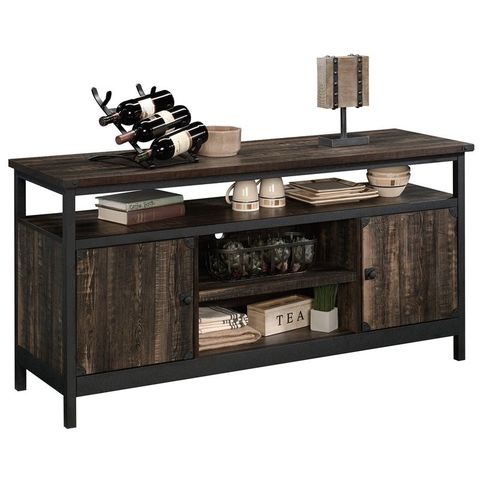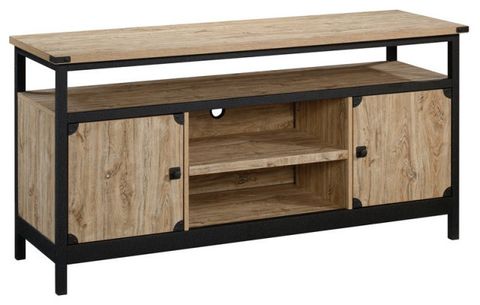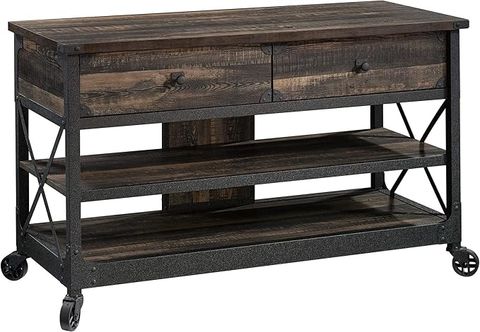Picture this: you’re relaxing in your living room, enjoying your favorite show, when suddenly you realize that your portable TV cart has become the unsung hero of your home’s entertainment setup. It’s not just about having a screen that rolls around – it’s about creating a seamless experience that fits perfectly into your daily life. These mobile units have transformed how we think about home entertainment, but they also present unique challenges for designers and homeowners alike. The key lies in thoughtful integration rather than mere placement.
In today’s connected world, the demand for flexible entertainment solutions continues to grow. Mobile TV carts represent a fascinating intersection of technology and interior design, offering homeowners the freedom to position their viewing experience exactly where they want it. But here’s the thing – simply placing a cart in your living room isn’t enough. You need to consider how it interacts with your space, your lifestyle, and your existing furniture. What makes a mobile TV cart truly successful isn’t just its ability to roll, but its capacity to enhance rather than disrupt your home environment. Whether you’re renovating or simply looking to upgrade your current setup, understanding these design elements can make all the difference between a functional solution and a stylish one.
Space Planning and Dimensional Harmony
When you’re thinking about where to place a mobile TV cart, start with the fundamentals. Measure everything – your doorway, the clearance needed for the cart to move freely, and the space where you plan to set it down. The last thing you want is a cart that’s too big for your entryway or too small to accommodate your viewing needs.
Consider the room’s proportions. A cart that’s massive in a small apartment might overwhelm the space, while a tiny cart in a large living room could look lost. Think about the viewing distance too – if you’re planning to watch from 8 feet away, you’ll need a larger screen size than if you’re sitting just three feet from it.
The height matters as well. A cart that sits too high can strain your neck during extended viewing sessions. Experts suggest positioning the center of your screen at eye level when seated. This simple adjustment can transform your viewing comfort from frustrating to delightful.
One homeowner shared how they struggled with their first cart placement. "I put it in the corner because it looked good, but I was craning my neck all evening," they laughed. After adjusting the height and moving it closer to their seating area, their entire viewing experience improved dramatically.
Integration with Existing Furniture and Decor
A mobile TV cart should feel like it belongs in your home, not like it was dropped in from another dimension. That means considering how it complements your existing furniture and decor.
Start by matching the cart’s material and finish to your existing pieces. If you have wood furniture, a wooden cart will blend seamlessly. If your space leans toward modern aesthetics, a sleek metal or glass cart might be more appropriate.
Color coordination is equally important. You don’t need to match exactly, but the cart should complement rather than clash with your palette. Neutral tones often work best for maximum versatility.
Think about how the cart interacts with your seating arrangement. Will it block light? Does it create a natural focal point? Consider whether it enhances or interrupts the flow of conversation in your living space.
Some people choose to incorporate the cart into their overall design scheme. One family created a gallery wall around their cart, turning it into a centerpiece that actually enhanced their room’s artistic character. They painted the cart to match their accent wall and added decorative elements around it.
Power Management and Cable Organization
This is where many people overlook the most crucial aspect of mobile TV cart design. Power management goes far beyond just plugging in your device.
Cable organization becomes critical when you’re constantly moving your cart. Invest in cable management systems that can handle the wear and tear of frequent repositioning. Cord covers, velcro straps, and even built-in cable routing channels can save you from tangled messes.
Consider the power source. Do you want to run a permanent outlet, or are you okay with using extension cords? Permanent outlets offer convenience but require some electrical work. Extension cords provide flexibility but can look messy if not properly managed.
Battery-powered options are becoming increasingly popular for those who want complete mobility. These carts often come with built-in charging systems that keep everything running smoothly. Some models even feature solar panels for eco-conscious users.
A common mistake is underestimating the number of devices you’ll connect. Don’t just think about your TV – account for streaming boxes, sound systems, gaming consoles, and perhaps even a laptop. Plan accordingly for multiple ports and adequate power supply.
Stability and Safety Features
Safety should never be compromised for convenience. A mobile TV cart that wobbles or tips over can cause serious damage to your expensive equipment and potentially harm people in your home.
Look for carts with locking wheels that prevent accidental movement when you’re actively using them. The best carts have both large wheels for easy mobility and smaller casters for stability when stationary.
Weight distribution is key. Heavy TVs should be positioned low on the cart to maintain balance. The cart’s center of gravity should remain stable regardless of how you move it.
Consider anti-tip brackets or wall mounting options for particularly tall or heavy setups. These features add peace of mind and protect your investment.
Many people assume that because a cart moves easily, it must be unstable. Actually, the best mobile carts combine ease of movement with solid construction. They use quality materials and engineering to ensure they stay put when they need to.
One reviewer mentioned how their cart’s wheel system was so well-designed that they could easily move it across the room and still have it rock slightly when they accidentally bumped it. That’s not instability – that’s smart engineering.
Storage Solutions and Multi-Functional Design
Mobile TV carts aren’t just about displaying your screen. They’re storage solutions that can enhance your entire living experience when designed thoughtfully.
Think about what you actually need to store. Streaming devices, remote controls, books, games, and maybe even some snacks. The best carts offer multiple storage options – drawers, shelves, and cabinets that work together harmoniously.
Consider vertical versus horizontal storage. Vertical storage maximizes space but can make items harder to reach. Horizontal storage keeps things visible but may take up more floor space. Many successful designs combine both approaches.
Modular storage is particularly useful. If you’re planning to change your entertainment setup, modular components let you adapt the cart to new requirements without replacing the entire unit.
Some carts feature hidden compartments that keep your cables neat and your accessories secure. Others have built-in lighting that makes finding items easier in low-light conditions.
One family discovered that their cart’s storage was so well-thought-out that they started using it as their primary entertainment hub for everything from movie nights to game sessions. The combination of display and storage made it invaluable.
User Experience and Accessibility
The true test of a mobile TV cart’s success lies in how well it serves the people who use it daily. This means considering everyone who might interact with it.
Height accessibility is crucial. If you have children, elderly family members, or people with mobility issues, make sure they can reach controls and components safely. Adjustable height features or lower-mounted controls can make a huge difference.
Ergonomic considerations extend beyond just height. Is the cart easy to move? Does it have handles or a comfortable grip for maneuvering? Can you adjust the screen angle easily?
Control placement matters too. Remote controls should be within easy reach, and if you have multiple devices, consider how you’ll switch between them. Some carts feature integrated control panels or smartphone apps that simplify this process.
The user experience also includes how the cart handles different scenarios. Can it accommodate multiple people watching simultaneously? Does it have features that allow for different viewing angles?
One couple found that their cart’s adjustable screen mount allowed them to watch together from different positions in their living room. "We used to argue about where to sit," they said. "Now we can both enjoy our shows comfortably."
Accessibility isn’t just about physical capability – it’s also about emotional comfort. A cart that’s easy to use and integrate into daily routines creates positive associations with your home entertainment system.
Integrating mobile TV carts into residential environments requires more than just selecting the right piece of furniture. It demands careful consideration of how that cart will fit into your daily life, your existing design, and your safety requirements. When you approach this decision thoughtfully, you’re not just buying a piece of equipment – you’re investing in a better way to enjoy entertainment at home.
The key takeaway is that successful integration happens when you treat the cart as part of your home’s ecosystem rather than as an afterthought. Consider the space, the style, the safety, and the usability. Think about how it will evolve with your needs over time.
Remember, there’s no one-size-fits-all solution here. What works for one household might not work for another. The best approach is to carefully evaluate your specific situation, your lifestyle, and your aesthetic preferences. Then make choices that reflect those priorities.
Ultimately, a well-designed mobile TV cart becomes invisible in the best way possible – it enhances your home environment without demanding attention or causing disruption. It’s the kind of thoughtful design that makes you appreciate the marriage of form and function in your daily living spaces. Whether you’re a tech enthusiast or someone who simply wants a reliable entertainment solution, these considerations will help you find the perfect balance between mobility and permanence in your home setup.














